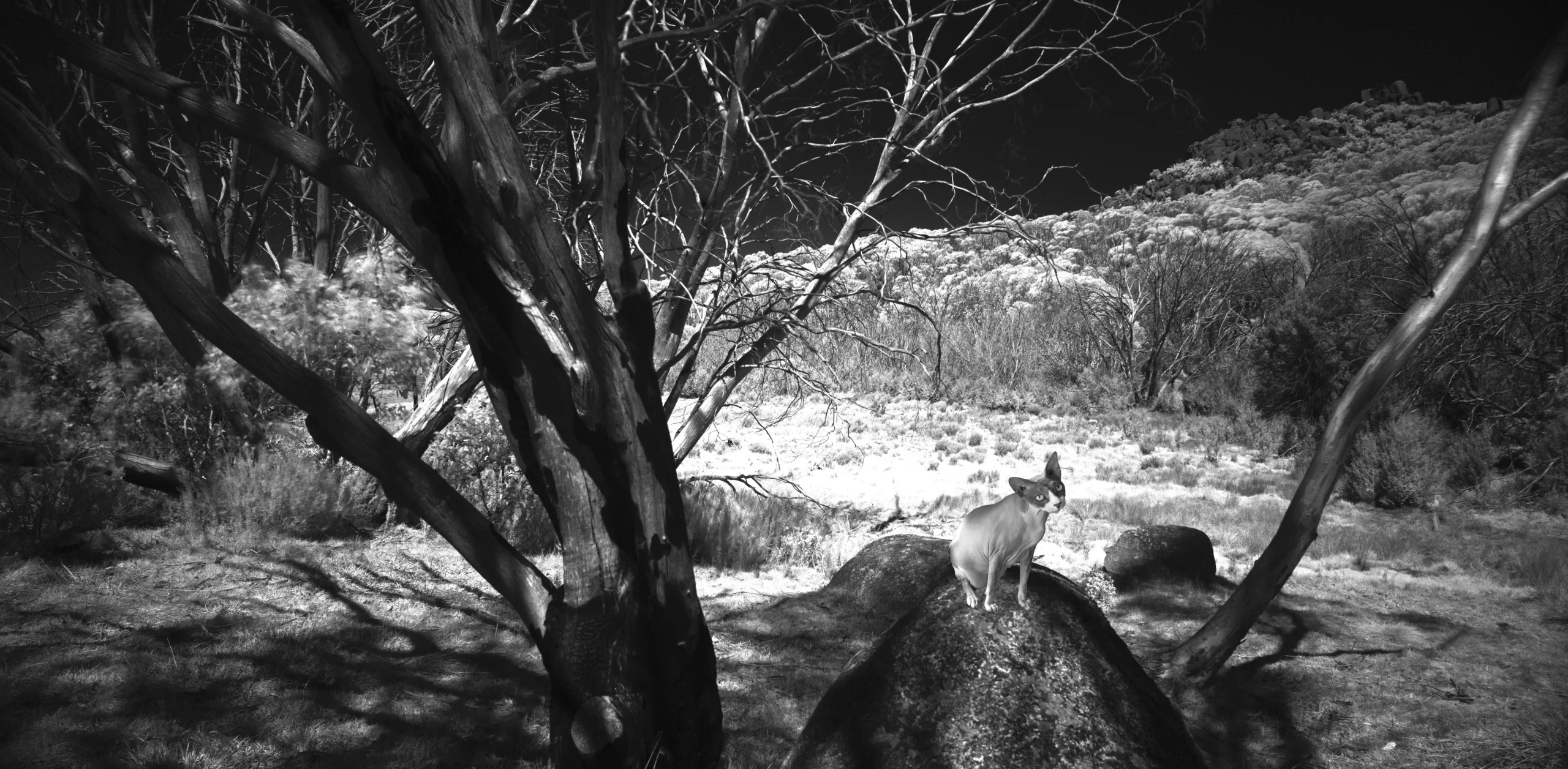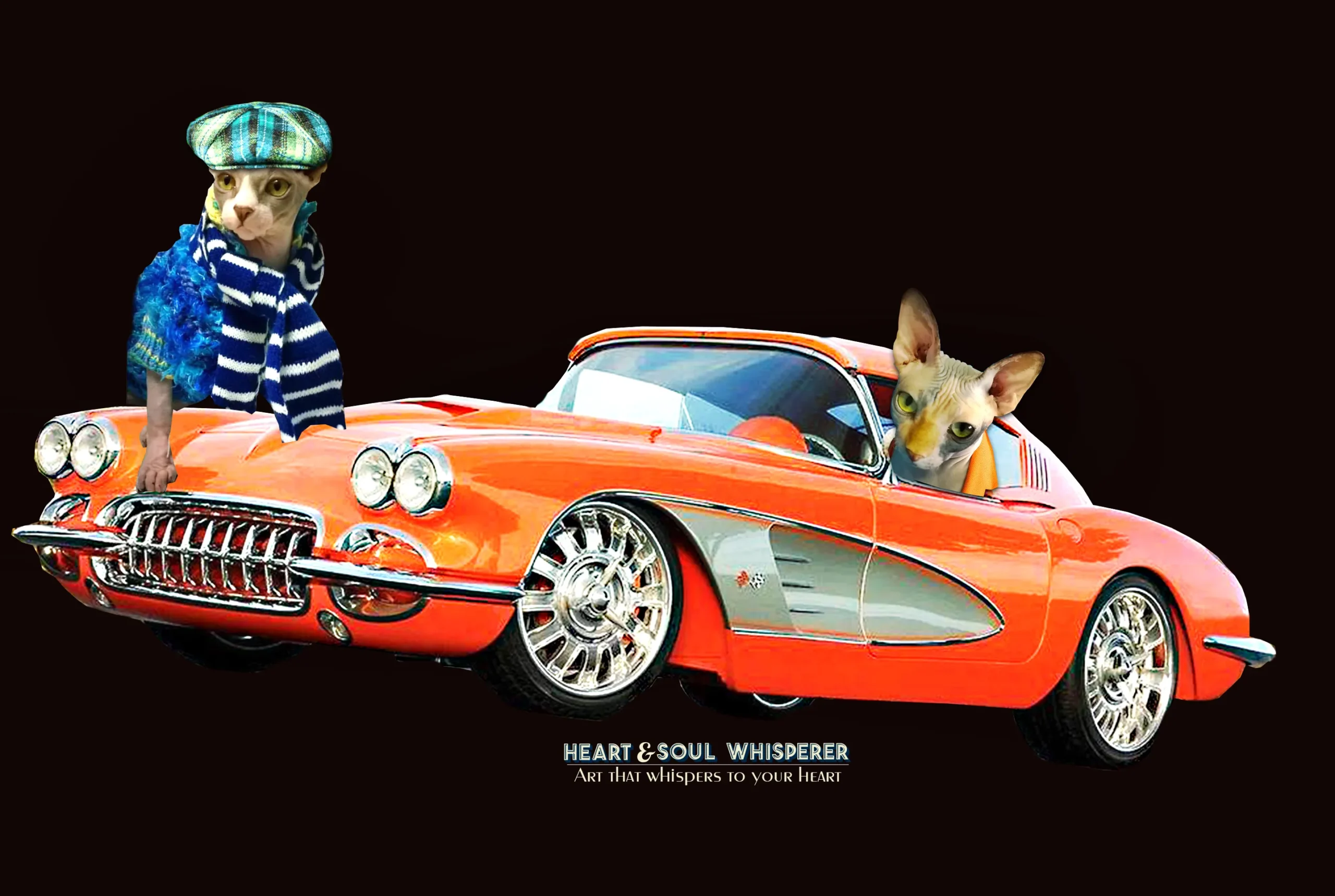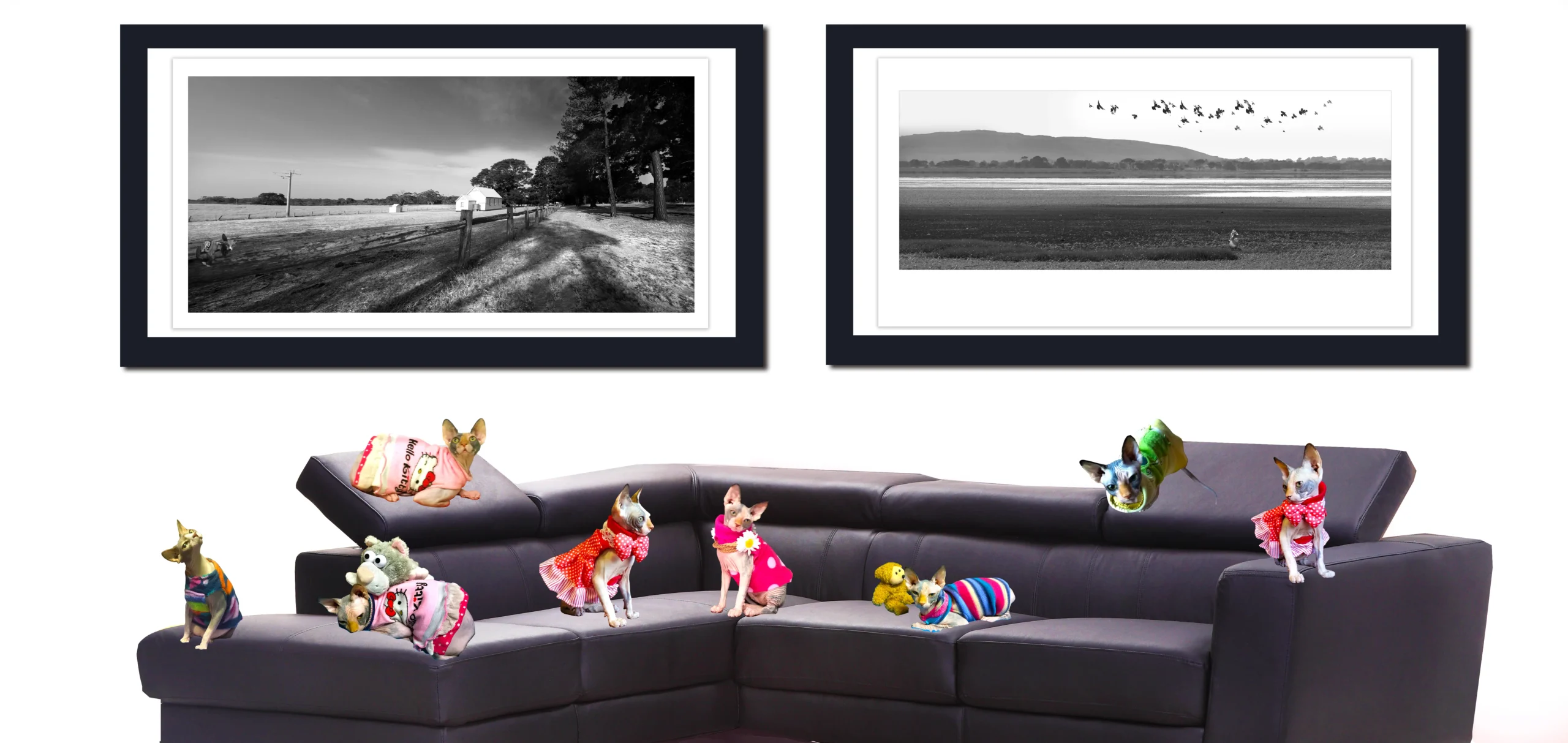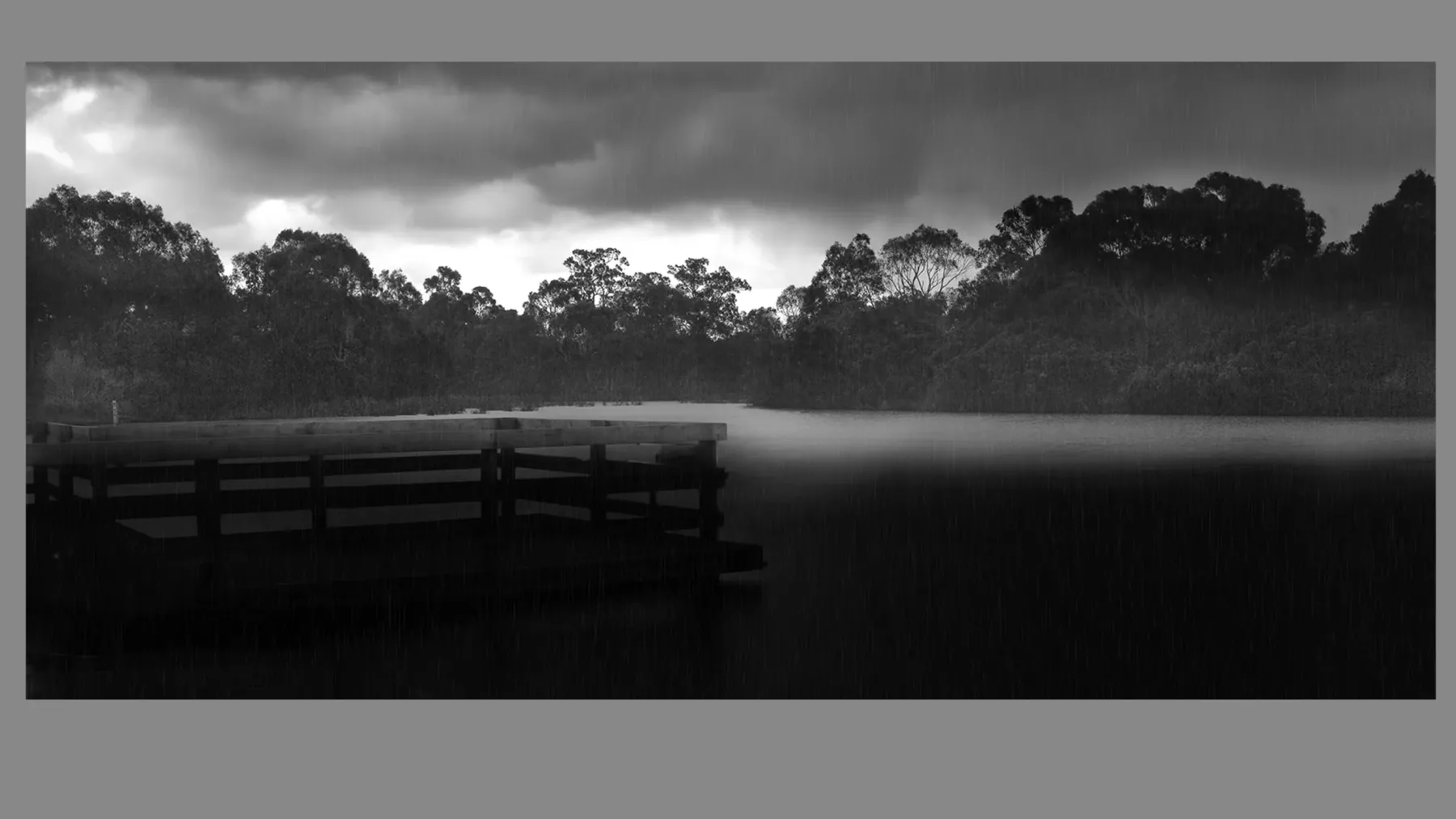Major Art Buyers’ Most Valued Photo Collections
Table of Contents
MAJOR ART BUYERS’ MOST VALUED PHOTO COLLECTIONS
- Introduction
- The Rise of Photography in High-End Collecting
- Profiles of Major Art Buyers with Valuable Photo Holdings
- Signature Works: Most Prized Photographs in Collections
- Influential Themes in Collector Preferences
- Role of Auction Houses in Photography Valuation
- Photography as a Luxury Asset and Investment
- Ethical and Legal Aspects of Collecting
- Preservation, Display, and Digital Access
- Conclusion
- References
1. INTRODUCTION
Fine art photography has undergone a profound transformation over the past century. What was once considered a secondary form of visual documentation is now among the most celebrated and commercially viable branches of the global art market. The rise of photography as a collectible asset reflects not only changes in artistic perception but also in cultural value systems, institutional validation, and collector behavior.
Photography’s inherent reproducibility once placed it outside the elite categories of one-of-a-kind artworks such as oil paintings or marble sculptures. However, the proliferation of limited editions, vintage prints, and artist-signed works has created new standards of rarity and value within the medium. This has enabled collectors to engage deeply with photography while also treating it as an investment-grade asset.
Elite collectors across the globe have embraced photography as both a historical archive and a canvas for contemporary innovation. These collectors include billionaires, royalty, fashion moguls, and music icons whose acquisitions help shape curatorial trends, drive market valuations, and cement the legacy of seminal photographic artists.
This article presents a thorough examination of the most influential photography collectors in the world today. These individuals and families possess some of the most remarkable, rare, and culturally significant photographic works in existence. Their collections span early modernism to postmodern conceptualism and touch on themes as diverse as identity, politics, consumerism, civil rights, and surrealism.
In addition to profiling key collectors, we will explore why certain works have become coveted icons in private holdings. Signature works by artists like Andreas Gursky, Diane Arbus, Cindy Sherman, Gordon Parks, Man Ray, and Helmut Newton command multi-million dollar auction prices and are tightly held within elite circles. The cultural value of these works often transcends monetary worth, positioning them as touchstones of artistic and social transformation.
Furthermore, this guide unpacks the mechanics of photography as a luxury investment. We delve into how auction houses, museum exhibitions, and private foundations contribute to the valuation and legitimacy of photographic artworks. We also address the ethical and legal considerations surrounding ownership, reproduction rights, and cultural stewardship.
By analyzing the collectors, the collections, and the works they revere, we reveal how photography has transitioned from ephemeral image-making to a critical pillar of the 21st-century art world. This transition not only marks a paradigm shift in art history but also signifies a broader societal embrace of images as carriers of truth, beauty, and influence.
Whether driven by passion, prestige, or the pursuit of profit, the motivations behind photography collecting are as varied as the images themselves. But what unites the major buyers profiled here is a deep appreciation for photography’s unique capacity to document, provoke, and inspire. As we turn our focus to these collectors and their signature acquisitions, we begin to see photography not as a static visual medium, but as a dynamic form of cultural currency in the global marketplace of ideas and aesthetics.
2. THE RISE OF PHOTOGRAPHY IN HIGH-END COLLECTING
The ascent of photography into the upper echelons of the fine art market is a story of persistence, reinvention, and redefinition. In the early days of its invention in the 19th century, photography struggled to gain acceptance within the academic and museum world. Many institutions dismissed it as a mechanical craft, incapable of reaching the aesthetic heights of painting or sculpture.
This began to change in the 20th century with the emergence of photographic pioneers such as Alfred Stieglitz, Edward Weston, and Man Ray. These artists not only expanded the creative boundaries of the medium but also advocated for its recognition as fine art. Their work, along with that of institutions like MoMA and the Getty, helped establish a curatorial foundation for photography that would eventually attract collectors.
In the late 20th century, photography’s status began to solidify thanks to landmark exhibitions and the rise of the art fair and biennale circuits. Artists such as Cindy Sherman, Richard Prince, and Andreas Gursky demonstrated photography’s capacity for conceptual depth, aesthetic innovation, and market appeal. Their works fetched record-breaking sums at auction, signaling photography’s arrival as a blue-chip asset class.
Today, photography is a dominant presence at international art fairs like Art Basel and Paris Photo. The medium is collected not just for its documentary and historical value, but for its ability to disrupt, challenge, and elevate visual culture. High-end collectors are increasingly drawn to photography’s mix of narrative, intimacy, and technological sophistication.
What makes photography especially compelling for collectors is its diversity. It offers both traditional and experimental approaches, appeals across generations, and often carries strong socio-political themes. Its adaptability to installation, digital display, and print editions makes it uniquely suitable for private and institutional collections alike.
Photography’s appeal in the luxury space has also been amplified by the fashion and advertising industries. Iconic works by photographers like Helmut Newton, Herb Ritts, and Annie Leibovitz have blurred the lines between commercial and fine art, attracting a wave of celebrity and fashion-forward collectors. Meanwhile, the advent of NFT photography has further complicated and expanded the definition of collectible photographic art.
The rise of photography in high-end collecting is thus a multifaceted phenomenon. It reflects a shift in cultural perception, a transformation in market structures, and an evolving sense of what constitutes art in the digital age. With each high-profile acquisition and museum show, photography cements its role as a central force in 21st-century visual culture.
3. PROFILES OF MAJOR ART BUYERS WITH VALUABLE PHOTO HOLDINGS
The following section introduces a select group of art buyers who have significantly influenced the landscape of photography collecting. Their acquisitions often shape auction trends, museum programming, and broader art historical discourse. Their collections are not only vast in scale but also carefully curated to reflect distinct aesthetic and ideological perspectives.
These collectors range from sovereign wealth fund-backed royal families to self-made entrepreneurs, philanthropists, and entertainment moguls. Despite their diverse backgrounds, they share a common recognition of photography’s unique power to reflect and reshape the human condition.
Photography within these private collections is not merely an accessory to more traditional mediums; in many cases, it is the focal point. Collectors today increasingly regard photographs not only as aesthetic objects but also as visual commentaries on political, economic, and social realities. The photographs they collect often speak directly to contemporary issues like identity, power structures, memory, and globalization.
For these major buyers, photography offers a fusion of conceptual richness and market flexibility. Unlike many traditional artworks, fine art photographs are often available in multiple editions, making them accessible yet exclusive, collectible yet reproducible. This balance appeals to those looking to diversify both the visual and financial portfolios of their art holdings.
Moreover, photography collecting has emerged as a statement of taste and cultural literacy. Major collectors frequently lend pieces to institutions like MoMA, Tate Modern, and Centre Pompidou, or display them in private foundations and museums bearing their names. These philanthropic gestures reinforce their influence on the canonization of certain artists and movements.
Each of the collectors profiled in the following sections possesses unique motivations and curatorial sensibilities. Some, like the Qatar Royal Family, aim to build national heritage collections that bolster soft power through cultural diplomacy. Others, like David Geffen and Leon Black, approach collecting as both a personal passion and an investment vehicle, acquiring historically significant works with museum provenance and exceptional market value.
Collectively, these figures represent a global elite whose choices impact everything from auction estimates and artist careers to curatorial trends and institutional narratives. Their collections provide a window into the values, aesthetics, and ideologies shaping the contemporary art world’s most dynamic and expressive medium—fine art photography.
THE QATAR ROYAL FAMILY
The Al Thani family of Qatar, acting through the Qatar Museums Authority (QMA), represents one of the most influential forces in global art collecting today. While much attention has been paid to their acquisitions of classical antiquities, modern painting, and Islamic art, their interest in fine art photography has grown considerably, cementing their role in shaping the canon of contemporary photographic practice.
The family’s collecting strategy is informed by a dual mission: to enrich the cultural infrastructure of Qatar through public art institutions and to position the nation as a soft-power leader in global culture. The construction of institutions such as the Museum of Islamic Art and the National Museum of Qatar reflects this broader vision, which now extends to photographic arts.
Among the Qatar Royal Family’s most renowned photographic acquisitions are large-scale works by Andreas Gursky, including “Rhein II,” and monumental pieces by Jeff Wall and Thomas Struth. These works are known not only for their aesthetic sophistication but also for commanding some of the highest prices in photography auction history. By acquiring such pieces, the Qatari government signals its commitment to both artistic innovation and cultural diplomacy.
The QMA has also made significant investments in collecting conceptual and documentary photography from the Middle East and North Africa (MENA) region. These acquisitions highlight political tension, social transformation, and environmental change, themes that resonate both regionally and globally.
Through exhibitions and collaborations with international museums, Qatar continues to influence the global perception of photography’s role in cultural storytelling. Their collection strategy reflects both a preservation of global photographic heritage and an investment in the political potential of the medium.
DAVID GEFFEN
David Geffen, co-founder of DreamWorks SKG and a major figure in entertainment and philanthropy, is also one of the most powerful collectors in the contemporary art world. Geffen’s approach to collecting is informed by both passion and shrewd market intuition. His photography acquisitions reveal a strong preference for works that provoke social and psychological insight.
Geffen’s collection includes major works by Diane Arbus, Robert Mapplethorpe, Nan Goldin, and Irving Penn. These artists, often controversial in their themes and styles, exemplify Geffen’s appreciation for photography’s capacity to confront and challenge societal norms.
One of Geffen’s most notable pieces is Arbus’s “Identical Twins, Roselle, New Jersey,” which exemplifies psychological complexity and is widely regarded as one of the most iconic images of the 20th century. He also holds several vintage Mapplethorpe prints exploring themes of identity, sexuality, and power—works that have grown significantly in cultural and market value.
What sets Geffen apart as a collector is his commitment to elevating photography to the level of painting and sculpture. He regularly loans works from his collection to institutions such as MoMA, the Getty, and the Whitney Museum, thereby reinforcing photography’s place in the fine art hierarchy.
In addition to high-profile sales and donations, Geffen has played a vital role in museum philanthropy. His donations have contributed to major endowments, allowing museums to expand their photography departments and exhibition capabilities. His influence as a collector thus goes beyond possession—it reshapes the institutional landscape of photographic art.
LEON BLACK
Leon Black, billionaire financier and co-founder of Apollo Global Management, is a major patron of the arts with deep ties to MoMA and the Metropolitan Museum of Art. His collecting strategy is characterized by an interest in rarity, provenance, and historical significance, and his photography acquisitions reflect those values.
Black is particularly drawn to early 20th-century photography and surrealist imagery. His collection includes rare gelatin silver prints by Man Ray, Paul Strand, and Irving Penn, with a focus on works that signify turning points in the history of the medium.
Among his most prized photographic holdings is Man Ray’s “Le Violon d’Ingres,” an iconic 1924 work that blends surrealism and classical reference. This image is often cited as one of the earliest and most enduring masterpieces of photographic modernism. Black’s version of the print is a rare early edition, significantly increasing its market value and institutional importance.
Leon Black’s approach to collecting photography is deeply strategic. He often works with private dealers and auction houses to acquire works that align with long-term curatorial ambitions and estate planning. His acquisitions tend to be low-profile but impactful, often influencing private sales trends and institutional priorities.
In addition to his personal holdings, Black has supported the expansion of photography departments at major museums, further institutionalizing photography’s role in cultural history. He understands that the power of photography lies not only in its ability to document but in its potential to evoke, question, and reimagine the world. Through his quiet but influential acquisitions, Black reinforces the importance of photographic heritage as a cornerstone of 20th- and 21st-century visual culture.
ELI BROAD
The late Eli Broad, a billionaire philanthropist and founder of The Broad museum in Los Angeles, was a passionate supporter of contemporary art and a key figure in the evolution of photographic collecting in the United States. Known for his visionary approach to cultural investment, Broad saw photography as a medium of both democratic accessibility and profound intellectual engagement.
Broad’s photography collection included major works from conceptual and postmodern artists whose influence on contemporary visual culture is unmatched. Among them were Cindy Sherman’s performative self-portraits, Barbara Kruger’s bold text-image compositions, and Andreas Gursky’s monumental digital landscapes. These artists represent the forefront of photographic discourse on identity, consumerism, and media critique.
His holdings were not limited to American figures; Broad was known for embracing global perspectives, and his collection spanned European and Asian photography as well. His interest in large-format and intellectually rigorous work helped define the institutional landscape of photography on the West Coast.
Broad’s commitment extended beyond acquisition. Through his foundation and The Broad museum, he made much of his collection available to the public, reinforcing the idea that photography deserves a prominent place in art institutions. He supported research, curatorial development, and public programming centered on photographic works.
As a philanthropist, Broad’s impact cannot be overstated. His belief in the civic role of the arts made him a transformative figure in Los Angeles and beyond. His photographic legacy remains a key component of his broader cultural contributions.
FRANÇOIS PINAULT
François Pinault, the French billionaire and founder of the Pinault Collection, is widely recognized as one of the world’s most powerful and influential art collectors. While he is best known for his acquisitions of contemporary painting and sculpture, photography has always held a prominent position within his private holdings and curatorial projects.
Pinault’s photographic collection reflects his interest in work that is emotionally charged, intellectually provocative, and aesthetically ambitious. His acquisitions include seminal works by Richard Prince, known for his appropriation and commentary on American culture; Wolfgang Tillmans, whose diverse practice spans abstraction and documentary; and Rineke Dijkstra, celebrated for her psychologically nuanced portraits.
Photography forms a crucial part of the exhibitions at Pinault’s private museums—including the Palazzo Grassi and Punta della Dogana in Venice, and the Bourse de Commerce in Paris. These spaces have showcased photography not as an ancillary medium, but as a central pillar of contemporary artistic expression.
Pinault’s passion for photography is rooted in his belief in its documentary power and its capacity for conceptual experimentation. His exhibitions often juxtapose photographic works with installation, sculpture, and painting, reinforcing photography’s role in cross-media dialogue.
Through patronage, publication, and institutional collaboration, Pinault has elevated the profile of photographic artists on the global stage. His collection and curatorial influence ensure that photography remains an essential voice in the broader narrative of contemporary art.
═════════════════════════════════════════════════════
Elevate your collection, your spaces, and your legacy with curated fine art photography from Heart & Soul Whisperer. Whether you are an art collector seeking timeless investment pieces, a corporate leader enriching business environments, a hospitality visionary crafting memorable guest experiences, or a healthcare curator enhancing spaces of healing—our artworks are designed to inspire, endure, and leave a lasting emotional imprint. Explore our curated collections and discover how artistry can transform not just spaces, but lives.
Curate a life, a space, a legacy—one timeless artwork at a time. View the Heart & Soul Whisperer collection. ➤Elevate, Inspire, Transform ➔
═════════════════════════════════════════════════════
BERNARD ARNAULT
Bernard Arnault, the CEO of LVMH and one of the richest individuals in the world, is known not only for his corporate empire but also for his significant influence on the art world through collecting and patronage. Photography plays an integral role in his vast and refined art collection, particularly works that align with fashion, luxury, and avant-garde aesthetics.
Arnault’s photographic acquisitions span both classic and contemporary names, including Helmut Newton, Thomas Ruff, Annie Leibovitz, and Jean-Baptiste Mondino. These artists mirror the LVMH ethos—glamorous, stylized, and culturally resonant.
Through his private foundation, the Fondation Louis Vuitton in Paris, Arnault has promoted exhibitions that celebrate photography as an art form in its own right. The foundation’s programming often includes high-profile solo shows and thematic displays that integrate photography within multimedia narratives.
Arnault’s approach to photography is closely aligned with the fashion world. He gravitates toward images that blend visual seduction with conceptual depth, favoring works that evoke themes of identity, allure, and surface. This includes both editorial-style fashion photography and conceptual projects that challenge the conventions of beauty and branding.
Bernard Arnault’s influence extends beyond acquisition. Through LVMH, he has supported numerous photographic festivals, publications, and museum exhibitions, particularly those that intersect with design and fashion. His role in photography collecting exemplifies how commerce, culture, and art can be mutually reinforcing forces in shaping public perception and market direction.
ELTON JOHN
Sir Elton John, internationally acclaimed musician and philanthropist, is also one of the most distinguished private collectors of photography in the world. His collection, estimated to include over 8,000 photographs, spans a wide spectrum of historical, documentary, modernist, and contemporary works. For Elton John, photography is not only a passion but a visual archive of human experience.
A key aspect of John’s collection is its diversity in style, era, and subject matter. From Dorothea Lange’s poignant images of the Great Depression to Man Ray’s surrealist masterpieces and the bold contemporary work of Nan Goldin, his holdings reflect both a comprehensive knowledge and an emotional connection to the medium. His taste embraces the documentary power of black-and-white photography and the conceptual provocation of modern and postmodern artists.
Among the highlights of John’s collection are vintage prints by Edward Weston, Diane Arbus, and André Kertész, as well as complete series by Robert Mapplethorpe and Cindy Sherman. He also owns iconic works by Herb Ritts, Horst P. Horst, and Irving Penn—photographers whose images shaped the visual lexicon of fashion and celebrity.
What distinguishes Elton John as a collector is not just the breadth of his acquisitions but his commitment to public access. In 2016, the Tate Modern in London mounted a landmark exhibition titled The Radical Eye, which featured selections from his private holdings. This exhibition highlighted John’s curatorial vision and helped elevate public discourse around photography as fine art.
John’s collecting is deeply personal, often guided by themes of intimacy, identity, and resilience. His interest in queer representation, portraiture, and human vulnerability is especially prominent in his acquisition of works by LGBTQ+ artists. He sees photography as a lens into untold stories and unfiltered truths.
In addition to collecting, Elton John has actively supported the arts through his foundation and philanthropy. His engagement with photography helps validate its cultural significance and continues to influence institutional priorities and market trends.
ALICE WALTON
Alice Walton, the Walmart heiress and founder of the Crystal Bridges Museum of American Art, has emerged as a formidable figure in photography collecting. Her acquisitions reflect a deep reverence for Americana, social documentary, and underrepresented voices in the art historical canon. As with the rest of her art holdings, Walton’s approach to photography is rooted in national heritage and cultural storytelling.
Walton’s photography collection focuses heavily on American artists, particularly those working in the 20th and 21st centuries. Among the standout figures in her holdings are Gordon Parks, whose searing images of segregation and civil rights transformed photojournalism into fine art; Walker Evans, renowned for his Depression-era documentation of rural America; and Carrie Mae Weems, whose work explores race, gender, and cultural memory.
Through her support of Crystal Bridges, Walton has made photography central to the museum’s mission. Exhibitions such as The Open Road: Photography and the American Road Trip and Ansel Adams: In Our Time have highlighted her commitment to the medium’s documentary and visionary capacities. The museum’s growing photography collection mirrors Walton’s personal interest in artworks that foster empathy, education, and national reflection.
Walton also recognizes the role of photography in elevating marginalized voices. She has invested in contemporary African American, Native American, and women photographers, using her platform to shift the focus of American art history toward inclusivity and complexity.
Her efforts go beyond acquisition. Walton supports scholarships, curatorial fellowships, and educational programming that engage communities with photographic art. Her commitment positions photography as a cornerstone of cultural identity and institutional responsibility.
THOMAS KOERFER
Swiss filmmaker, art collector, and cultural patron Thomas Koerfer is known for his refined taste in European modernism, surrealism, and conceptual art—with a special passion for vintage photography. Though less publicly known than some of his billionaire counterparts, Koerfer commands significant influence in the art world through his quietly exceptional collection.
Koerfer’s photography holdings include rare and early prints by Brassaï, Henri Cartier-Bresson, and Claude Cahun—figures who pushed the boundaries of photography’s role in documentation and self-representation. His focus on surrealist and early 20th-century works aligns with his interest in art that challenges normative perspectives and explores subconscious narratives.
A particularly notable aspect of Koerfer’s collection is its attention to historical significance and print rarity. He acquires photographs that are not only visually compelling but historically invaluable—works that capture pivotal moments in artistic and political history.
His interest extends to experimental techniques and photo-literary intersections. Koerfer is known to collect photobooks and portfolios, often by artists whose work exists at the fringe of traditional classification. His collection includes works by László Moholy-Nagy, Man Ray, and Florence Henri, whose avant-garde aesthetics shaped the evolution of modern photography.
Although Koerfer’s collection is mostly private, he occasionally collaborates with European museums for exhibitions and loans. His support of emerging curators and his involvement with foundations dedicated to photographic preservation ensure that his influence is felt beyond the walls of his own archive.
Through his collecting, Thomas Koerfer contributes to the preservation of photography’s intellectual and poetic dimensions, safeguarding its most fragile, haunting, and thought-provoking legacies for future generations.
PETER BRANT
Peter Brant, the American industrialist, publisher, and art patron, is one of the most dedicated supporters of contemporary photography in the United States. Known for his flamboyant lifestyle and keen eye for cultural trends, Brant’s art collection blends avant-garde provocation with market savvy—and photography plays a central role in that vision.
Brant’s interest in photography is rooted in his broader passion for contemporary art and media. He was among the first private collectors to champion photographers whose work blurred the lines between fine art, fashion, and celebrity. His collection includes major works by Steven Meisel, Cindy Sherman, Nan Goldin, and Richard Prince—artists known for interrogating media, identity, and sexuality.
Steven Meisel’s iconic collaborations with Madonna, especially from the Sex book and associated photographic series, are prominent in Brant’s holdings. These works encapsulate Brant’s preference for boundary-pushing, culturally influential imagery that both reflects and critiques the aesthetics of glamour and desire. His appreciation for provocative photography aligns closely with his role as a magazine publisher and tastemaker.
Cindy Sherman’s conceptual portraits, particularly those from her Untitled Film Stills and Centerfolds series, are another cornerstone of Brant’s collection. These pieces engage themes of performance, identity construction, and gender roles—subjects that resonate with Brant’s broader curatorial ethos.
In addition to collecting, Brant is a key cultural producer. He founded the Brant Foundation Art Study Center, which regularly exhibits photography as part of its contemporary programming. Located in Greenwich, Connecticut and New York City’s East Village, the foundation has hosted retrospectives of artists who use photography as a primary or hybrid medium.
Brant’s commitment to photography is both aesthetic and infrastructural. He supports exhibitions, publications, and education initiatives that reinforce photography’s place in cultural discourse. His approach combines personal enthusiasm with strategic influence, making him a central figure in the promotion and institutionalization of contemporary photographic art.
Brant’s collection not only captures the zeitgeist of late 20th- and early 21st-century photography but also exemplifies how private collectors can shape public understanding of visual culture. Through his acquisitions and initiatives, he continues to champion photography as a provocative, critical, and enduring art form.
═════════════════════════════════════════════════════
Transform your spaces and collections with timeless curated photography. From art collectors and investors to corporate, hospitality, and healthcare leaders—Heart & Soul Whisperer offers artworks that inspire, elevate, and endure. Discover the collection today. Elevate, Inspire, Transform ➔
═════════════════════════════════════════════════════
4. SIGNATURE WORKS: MOST PRIZED PHOTOGRAPHS IN COLLECTIONS
The value and prestige of a photography collection often hinge on a few signature works—pieces that are not only rare and expensive, but also symbolically rich and historically resonant. These photographs function as visual landmarks within a collection, reflecting both the collector’s aesthetic sensibility and the social, political, or cultural narratives they deem important.
Among the most iconic examples is Andreas Gursky’s Rhein II, held in the Qatar Royal Family’s collection. This large-scale photograph—an abstracted image of the Rhine River—set the auction record for the most expensive photograph ever sold. Its minimalist composition and monumental scale demonstrate Gursky’s mastery of digital manipulation and conceptual landscape, elevating the river scene into an almost sublime meditation on modernity and the environment.
David Geffen’s collection includes Diane Arbus’s haunting Identical Twins, Roselle, New Jersey. This photograph, emblematic of Arbus’s exploration of psychological depth and societal edges, captures a moment of unsettling symmetry that continues to provoke discussion and scholarly interpretation. The image’s presence in Geffen’s holdings underscores his preference for socially and emotionally complex photography.
Leon Black owns a rare print of Man Ray’s Le Violon d’Ingres—a surrealist icon that superimposes violin f-holes on a nude female back, fusing the human body with classical music symbolism. The image’s wit, eroticism, and conceptual elegance make it one of the defining works of 20th-century avant-garde photography.
Elton John’s prized possession, Edward Weston’s Pepper No. 30, represents a masterclass in form, light, and abstraction. This black-and-white photograph of a solitary bell pepper, shaped and lit to evoke sensuality and sculptural depth, is a cornerstone of modernist still life and a recurring highlight in John’s exhibitions.
François Pinault’s collection is home to Cindy Sherman’s Untitled #96, from her groundbreaking Centerfolds series. The image features Sherman staged as a vulnerable, introspective young woman—challenging gender roles and media archetypes. It is not only one of her most famous works but also one of the highest-priced photographs ever sold by a living artist.
Bernard Arnault’s collection includes fashion-oriented photography such as Helmut Newton’s Sie Kommen. This diptych—featuring the same four women, first clothed and then nude—explores power, sexuality, and spectacle in striking black-and-white composition. Its theatrical elegance and provocative undertone perfectly align with Arnault’s luxury aesthetic and curatorial choices.
Alice Walton’s most prized photograph may well be Gordon Parks’s American Gothic, Washington, D.C.. This poignant image of a Black government worker standing before an American flag with a mop and broom reinterprets Grant Wood’s iconic painting into a powerful indictment of racial inequality. Its inclusion in Walton’s collection speaks to her commitment to American documentary traditions and social justice themes.
Peter Brant’s acquisition of Steven Meisel’s images from the Sex series, particularly those featuring Madonna, embodies the blurred lines between art, celebrity, and cultural commentary. These photographs are simultaneously glamorous and subversive, illustrating Brant’s taste for high-impact, culturally loaded visual narratives.
Each of these works holds artistic, cultural, and economic significance. Their inclusion in private collections not only elevates the profile of their respective artists but also signals shifting paradigms in how photography is valued and interpreted. These prized pieces serve as benchmarks of taste, influence, and legacy—affirming the collectors’ roles as both stewards of visual history and architects of the future photographic canon.
5. INFLUENTIAL THEMES IN COLLECTOR PREFERENCES
As photography continues to evolve within the high-end art world, major collectors are increasingly drawn to specific themes that resonate with broader cultural, political, and philosophical concerns. These preferences are not merely aesthetic; they reflect deep convictions about what photography can communicate and preserve in an age of digital saturation and rapid social change.
One dominant theme is identity and self-representation. Collectors show a marked interest in works that interrogate race, gender, sexuality, and personal narrative. Artists like Cindy Sherman, Zanele Muholi, Nan Goldin, and Catherine Opie feature prominently in these collections, celebrated for their explorations of personal and collective identity through performative and documentary lenses.
Historical documentation is another prevailing theme, particularly in collections that emphasize the social function of photography. Images by Gordon Parks, Dorothea Lange, and Sebastião Salgado appear frequently, as they preserve moments of political and humanitarian consequence. These works transform photography into visual testimony and resonate with collectors who value art as a form of activism or historical record.
A growing interest in environmental and landscape photography reflects contemporary concerns about climate change and urbanization. Works by Edward Burtynsky, Andreas Gursky, and Richard Misrach capture altered landscapes, polluted environments, and the vast imprint of human activity. Collectors engaged with ecological themes often favor large-scale prints that command attention and provoke reflection.
Photography that blurs the boundary between reality and artifice is also highly favored. This includes staged photography, surrealist compositions, and digitally manipulated works. Artists such as Jeff Wall, Thomas Demand, and Gregory Crewdson construct hyperreal scenes that challenge the documentary authority traditionally ascribed to photography. Their inclusion in major collections highlights a growing appetite for intellectual complexity and visual ambiguity.
Finally, many collectors express a preference for photography that engages with the art historical canon. By acquiring works that reference or reinterpret classical paintings, sculpture, and modernist aesthetics, collectors position photography as part of a continuum of visual culture. This includes acquisitions of rephotographed works, conceptual homages, and images that appropriate iconic motifs to generate new meanings.
These themes not only shape individual collections but also influence institutional exhibitions and auction trends. By privileging photography that is intellectually rich, emotionally resonant, and culturally relevant, collectors help define the evolving legacy of the medium.
6. ROLE OF AUCTION HOUSES IN PHOTOGRAPHY VALUATION
Auction houses play a pivotal role in shaping the photography market, serving as gatekeepers of value and arbiters of taste. Through high-profile sales, curated auctions, and strategic marketing, institutions like Sotheby’s, Christie’s, and Phillips have helped elevate photography to the status of blue-chip art.
One of the most significant contributions of auction houses is their ability to establish benchmark prices. When Andreas Gursky’s Rhein II sold for over $4.3 million at Christie’s, it not only broke records—it redefined the market ceiling for photographic art. Such moments create ripple effects, raising the perceived value of similar artists and encouraging collectors to treat photography as a serious investment.
Auction houses also function as tastemakers through thematic sales and curated catalogues. By grouping photographs under specific narratives—such as “Icons of Modernism” or “Contemporary Visionaries”—they frame photography within a cultural and historical context that attracts both seasoned collectors and new buyers.
In addition to hammer prices, auction houses influence valuation through authentication, provenance verification, and condition reporting. A work’s placement in an auction catalogue often signals institutional endorsement, particularly when it comes from a distinguished collection or is accompanied by strong exhibition history.
Photography auctions have increasingly embraced digital platforms, expanding their global reach. Online sales, hybrid auctions, and real-time bidding apps have democratized access to high-value works, bringing new collectors into the fold. This digital shift has also benefited photographic art, which lends itself well to screen-based viewing and detailed metadata presentation.
However, auction houses are not without critique. Concerns over speculative pricing, underrepresentation of non-Western artists, and the commodification of politically sensitive imagery remain ongoing issues. Still, their influence on photography’s economic and cultural positioning is undeniable.
Through strategic sales, collector education, and global visibility, auction houses help define what is valuable, collectible, and enduring in photography. Their actions ripple across private and institutional collections alike, making them central players in the photographic art ecosystem.
7. PHOTOGRAPHY AS A LUXURY ASSET AND INVESTMENT
Photography has emerged as one of the most dynamic and accessible segments of the luxury asset market. As collectors increasingly diversify their holdings beyond traditional media, fine art photography offers a compelling blend of aesthetic value, cultural capital, and financial return.
Unlike painting or sculpture, photography is often available in limited editions, which creates a structured hierarchy of rarity and value. This system appeals to both first-time investors and seasoned collectors looking to balance uniqueness with liquidity. The availability of editioned prints also facilitates portfolio diversification within a single artist’s oeuvre.
Photography’s growing popularity among high-net-worth individuals is partly driven by its compatibility with modern design sensibilities. Sleek, large-format prints are ideal for contemporary interiors, corporate spaces, and luxury residences. Collectors value photography not only as cultural enrichment but also as a visual asset that complements their lifestyle and brand.
Institutional validation has further legitimized photography as an investment-grade category. Museum exhibitions, academic publications, and biennial participations contribute to an artist’s market value. When artists such as Cindy Sherman or Thomas Struth are the subject of major retrospectives, the price of their works typically increases in the secondary market.
Art advisors and wealth managers now routinely recommend photography as part of art investment portfolios. Market data from platforms like Artprice and Artnet provide performance benchmarks, while private sales through galleries and advisors allow for strategic acquisitions with long-term potential.
Photography also offers lower entry points compared to painting, enabling younger collectors to engage with blue-chip names without requiring multimillion-dollar budgets. This accessibility is balanced by the presence of ultra-high-end sales, creating a tiered market that accommodates both prestige and pragmatism.
As global interest in photography continues to rise, so does its financial relevance. Collectors now view it not only as a cultural pursuit but as a strategic asset—one that combines intellectual satisfaction with tangible returns. Whether displayed in penthouses or stored in climate-controlled vaults, photography has earned its place as a 21st-century luxury investment.
Discover MORE FROM HEART & SOUL WHISPERER
“A journey of love, remembrance, and artistic expression.”
About the Artist ➤ | Heart & Soul Whisperer Story ➤ | Tributes to Zucky ➤ | Fine Art Blog ➤
8. ETHICAL AND LEGAL ASPECTS OF COLLECTING
As photography continues to gain prominence in elite art circles, questions of legality and ethics have grown in parallel with its financial valuation. High-profile collectors must navigate a complex landscape of copyright law, moral rights, authenticity, and cultural sensitivity. These concerns are not peripheral—they fundamentally shape the integrity of photography collections.
Copyright and moral rights are among the most significant legal issues in photography. Unlike painting or sculpture, photographs can be reproduced in large quantities, which means ownership of the print does not automatically convey rights to copy, distribute, or publish the image. Collectors must be aware of the limits imposed by copyright law and, in many jurisdictions, the moral rights retained by the artist—such as the right to attribution and protection against derogatory treatment of the work.
The problem of unauthorized reproduction has been compounded by the digital age. Images circulated online can be easily downloaded and printed, blurring the lines between the authentic and the derivative. This makes provenance and certification even more essential. High-value collectors often demand detailed acquisition histories, edition verification, and documentation of prior exhibitions or publications.
Cultural sensitivity is another growing concern. Photography’s documentary power makes it a potent tool for social commentary, but it can also perpetuate exploitation or misrepresentation—especially in ethnographic and war photography. Collectors must consider the ethical implications of displaying and promoting images that depict suffering, marginalization, or sacred cultural practices.
Restitution and repatriation are increasingly relevant in photographic archives as well. Images taken in colonial contexts, or acquired during politically fraught periods, are being re-evaluated in light of contemporary understandings of cultural rights and historical justice. Some institutions have begun returning such works or developing shared custodianship agreements with communities of origin.
Collectors must also address the legal risks associated with photographs of living individuals. Privacy laws and the right to one’s image vary widely across jurisdictions, and some photographic works may come under legal scrutiny if they were created or displayed without the subject’s consent.
In response to these challenges, ethical collecting practices now include the use of transparent contracts, fair compensation to subjects when appropriate, artist-approved print verification, and collaboration with curators or advisors who specialize in legal frameworks. Collecting ethically is not just a matter of legal compliance—it is a reflection of the values that underpin a collection’s long-term significance and public reception.
9. PRESERVATION, DISPLAY, AND DIGITAL ACCESS
Photography’s material nature—often involving delicate papers, chemical processes, and light-sensitive surfaces—makes preservation an essential aspect of collecting. Proper storage, conservation, and display protocols are vital to ensuring the longevity and value of a photographic collection.
Temperature and humidity control, acid-free mounting, and limited exposure to UV light are basic requirements for storing photographs. Archival-grade materials and professional conservation techniques must be used to prevent degradation, especially for vintage or analog prints. Collectors with extensive holdings typically invest in climate-controlled vaults and conservation staff.
For display, rotational exhibition schedules help limit exposure to light damage. Museums and major collectors often use facsimiles or digital projections when continuous public display of originals would pose preservation risks. Innovations in LED lighting, UV filters, and anti-reflective glass have improved the feasibility of long-term display in both institutional and residential settings.
Digitization plays a dual role in preservation and access. High-resolution scanning ensures a backup record of the physical object while enabling virtual exhibitions, research access, and public engagement. Some collectors have begun developing proprietary digital archives or lending digital surrogates to educational institutions and online platforms.
Display strategy also reflects curatorial vision. Thematic arrangement, cross-media juxtaposition, and spatial choreography all contribute to how photographs are perceived. Contemporary collectors often collaborate with museum professionals, designers, and lighting specialists to achieve immersive viewing experiences.
There is growing interest in interactive and immersive formats that blend photography with video, projection mapping, or augmented reality. These approaches redefine the viewer’s relationship to the image and open new possibilities for photographic storytelling.
Ultimately, the way photographs are preserved and displayed shapes their cultural afterlife. Thoughtful stewardship ensures that these images continue to inspire, inform, and provoke dialogue across generations.
10. CONCLUSION
The transformation of photography from a functional medium into one of the most coveted forms of contemporary art is a testament to its power, versatility, and relevance. In tracing the collecting practices of major buyers, we uncover a world where taste, strategy, cultural vision, and financial investment converge. These collectors are not merely acquiring objects—they are actively shaping the photographic canon, expanding its reach, and deepening its meaning.
From identity politics to environmental critique, from documentary gravitas to surrealist fantasy, photography today occupies every corner of cultural inquiry. It captures what is fleeting and eternal, factual and fabricated. And it does so with a potency that has earned it a central place in the world’s most prestigious private collections.
The rise of photography as a luxury asset parallels broader trends in global wealth, digitization, and aesthetic globalization. Yet, its heart remains rooted in storytelling, emotion, and revelation. The most valued photo collections reflect this duality—balancing rarity with resonance, and prestige with purpose.
As photography continues to evolve in technique and context, the role of collectors will remain critical. They are not just curators of taste, but guardians of memory, identity, and visual history. In their hands, photography’s legacy is not only preserved but continuously reimagined.

═════════════════════════════════════════════════════
Heart & Soul Whisperer Art Gallery, founded by Dr Zenaidy Castro—a Melbourne-based cosmetic dentist and principal of Vogue Smiles Melbourne—offers a curated online destination to buy arts online, featuring exquisite abstract arts and timeless monochrome black and white photography and more. VISIT OUR SHOP PAGE
????SHOP NOW FOR OUR LIMITED EDITIONS PHOTOGRAPHIC PRINTS & ABSTRACT ART????
═════════════════════════════════════════════════════
════════════════════════════════════════════════════
Discover More: Art Collectors and Their Collections
Inside The World’s Greatest Private Art Collection
Exploring the Life and Art of Herbert and Dorothy Vogel
Art, History & Heritage : Qatar Museums Uncovered
Secrets Behind Famous Private Art Collections
Bill Gates Private Art Collection : Masterpieces & Mystery
Explore Mark Zuckerberg’s Private Art Collections & Interest
Elon Musk Impact on Art : Philanthropy and Innovation
High Profile Individuals and Their Private Art Collections
Top 200 Private Art Collections in the 21st Century
Leading 100 Private Art Collectors with $1 Billion+ in Art
Trump Tower : Art, Architecture, and Real Estate Legacy
Private Art Collections That Became Museums
The Legacy of Peggy Guggenheim’s 20th-Century Art Collection
Private Art Collectors Who Shaped Art History
Inside The Royal Collection: Arts, Photography, Sculptures
The 20 Most Expensive Artworks Ever Recorded of All Time
100 Historic Masterpieces Worth Over $500 Million each
Most Expensive Photography Sales in History
11. REFERENCES
- Cotton, C. (2014). The Photograph as Contemporary Art. Thames & Hudson. ISBN 9780500204184
- Grundberg, A. (1999). Crisis of the Real: Writings on Photography Since 1974. Aperture. ISBN 9780893818364
- Phillips, C. (1982). On the Museum’s Ruins. October, Vol. 13
- Rosenblum, N. (2007). A World History of Photography. Abbeville Press. ISBN 9780789209375
- Swartz, A. (2016). Art and Photography. Phaidon Press. ISBN 9780714868587
- Wallis, B. (1990). Art After Modernism: Rethinking Representation. The New Museum. ISBN 9780879235244
- Willis, D. (2002). Reflections in Black: A History of Black Photographers 1840 to the Present. W.W. Norton. ISBN 9780393048807
- Sotheby’s Auction Catalogs (Various Years). Fine Art Photography Sales
- Christie’s Auction House Reports. Annual Photography Market Analysis
- MoMA Curatorial Files on Photography Department Acquisitions
__________________________________________________________

Globetrotting Dentist and Australian Artists and Emerging Photographer to watch in 2025 Dr Zenaidy Castro. She is a famous cosmetic dentist in Melbourne Australia. Australia’s Best Cosmetic Dentist Dr Zenaidy Castro-Famous cosmetic dentist in Melbourne Australia and award-winning landscape photographer quote: Trust me, when you share your passions with the world, the world rewards you for being so generous with your heart and soul. Your friends and family get to watch you bloom and blossom. You get to share your light and shine bright in the world. You get to leave a legacy of truth, purpose and love. Life just doesn’t get any richer than that. That to me is riched fulfilled life- on having to discovered your life or divine purpose, those passion being fulfilled that eventuates to enriching your soul. Famous Australian female photographer, Australia’s Best woman Photographer- Dr Zenaidy Castro – Fine Art Investment Artists to Buy in 2025. Buy Art From Emerging Australian Artists. Investing in Art: How to Find the Next Collectable Artist. Investing in Next Generation Artists Emerging photographers. Australian Artists to Watch in 2025. Australasia’s Top Emerging Photographers 2025. Globetrotting Dentist and Australian Artists and Emerging Photographer to watch in 2025 Dr Zenaidy Castro. She is a famous cosmetic dentist in Melbourne Australia.
Globetrotting Dentist and Australian Artists and Emerging Photographer to watch in 2025 Dr Zenaidy Castro. She is a famous cosmetic dentist in Melbourne Australia. Australia’s Best Cosmetic Dentist Dr Zenaidy Castro-Famous cosmetic dentist in Melbourne Australia and award-winning landscape photographer quote: Trust me, when you share your passions with the world, the world rewards you for being so generous with your heart and soul. Your friends and family get to watch you bloom and blossom. You get to share your light and shine bright in the world. You get to leave a legacy of truth, purpose and love. Life just doesn’t get any richer than that. That to me is riched fulfilled life- on having to discovered your life or divine purpose, those passion being fulfilled that eventuates to enriching your soul. Famous Australian female photographer, Australia’s Best woman Photographer- Dr Zenaidy Castro – Fine Art Investment Artists to Buy in 2025. Buy Art From Emerging Australian Artists. Investing in Art: How to Find the Next Collectable Artist. Investing in Next Generation Artists Emerging photographers. Australian Artists to Watch in 2025. Australasia’s Top Emerging Photographers 2025. Globetrotting Dentist and Australian Artists and Emerging Photographer to watch in 2025 Dr Zenaidy Castro. She is a famous cosmetic dentist in Melbourne Australia.


Got questions? We’d love to help.
Fill your world with artwork that evokes feeling.
Explore the gallery, find your kindred creation.
Because your light deserves to shine.
═══════════════════════════════════════════════════
At Heart & Soul Whisperer Art Gallery, every coloured and black and white photograph tells a story beyond sight—an emotional journey captured in light, shadow, and soul. Founded by visionary artist Dr Zenaidy Castro, our curated collections—spanning landscapes, waterscapes, abstract art, and more—offer a timeless elegance that transcends fleeting trends. Whether enriching private residences, corporate offices, healthcare facilities, hospitals, or hospitality spaces, our artworks are designed to transform environments into sanctuaries of memory, beauty, and enduring inspiration. Let your walls whisper stories that linger—reflections of art, spirit, and the love that connects us all.
SPECIAL B&W THEMES & SIGNATURE SERIES ➤ Limited Editions ➤ Infrared ➤ Vintage & Retro ➤ Film Emulation Photography ➤ Minimalism ➤ Chiaroscuro Landscapes ➤ Tenebrism-Inspired Scenes➤ Moody Landscapes ➤ Mystical Landscapes ➤ Moody and Mystical ➤
EXPLORE COLOURED LANDSCAPES & WATERSCAPES ➤ Country & Rural ➤ Mountain ➤ Trees & Woodlands ➤ At The Water’s Edge ➤
EXPLORE BLACK & WHITE LANDSCAPES & WATERSCAPES ➤Country & Rural ➤ Australian Rural ➤ The Simple Life ➤ Cabin Life & shacks ➤ Mountain ➤ Trees & Woodlands ➤ At The Water’s Edge ➤ Lakes & Rivers ➤ Waterfalls ➤ Beach, Coastal & Seascapes ➤ Reflections ➤ Snowscapes ➤ Desert & The Outback ➤
EXPLORE OUR CURATED COLLECTIONS ➤ Black and White ➤ Colour ➤ Abstract Art ➤Digital Art ➤People ➤
DISCOVER MORE ABOUT THE ARTIST & FOUNDER ➤About the Artist ➤ Blog ➤ Pet Legacy ➤Dr Zenaidy Castro’s Poetry ➤ Pet Poem ➤ The Globetrotting Dentist & photographer ➤ Creative Evolution ➤ As a Dentist ➤ Cosmetic Dentistry ➤ Vogue Smiles Melbourne ➤
DISCOVER MORE ABOUT HEART & SOUL WHISPERER ➤ The Making of HSW ➤ The Muse ➤The Sacred Evolution of Art Gallery ➤ Unique Art Gallery ➤
════════════════════════════════════════════════════
════════════════════════════════════════════════════
Explore more helpful and informative resources:
OFFICE & BUSINESS RESOURCES ➤ Artwork for Every Healthcare Facility ➤ Colour Theraphy in Healthcare ➤ Healing Wall Art for Every Room in the Hospital ➤ Corporate Art For Business Offices- Office Wall Art for sale ➤ Office and Business Art – Corporate Spaces with Elegance ➤ How to Choose Art for Your Office ➤ Office Wall Colours and Artwork Choices for Productivity ➤ Art and Colour in Architecture ➤ Styling Cruise Interiors with Fine Art Photography ➤ Affordable luxury art for corporate art procurement ➤ Hospitality Art ➤ Best Wall Art for Every Hotel Type ➤ Art and Colour in Boutique Hotels & Luxury Resorts ➤
INTERIOR DECORATORS RESOURCES ➤ B&W Photography ➤ Celebrity Homes and B&W Photography: Iconic Style Secrets ➤ The Psychology of Visual Rhythm in Art Display ➤ Emotional Luxury: Where Art Meets Interior Design ➤ Art and Colour in Luxury Properties ➤ Transform Interiors with Fine Art Photography and Style ➤ Fine Art Photography: Capturing Emotion, Ideas, and Vision ➤ Giclée Fine Art Print ➤
FENGSHUI & VASTU RESOURCES ➤ Attract Good Luck with Lucky Feng Shui Art and Vastu Art ➤ Harness Vastu Shastra and Art to Invite Good Fortune ➤ Feng Shui Art to Attract Good Luck ➤
CATS IN ART ➤ Sphynx Cats Photography ➤ Immortalize Your Pets | Fine Art Photography Tribute Prints ➤ Sphynx Cats in Art ➤ Cats in Art ➤ Exotic Cat Breed in Art ➤ Sphynx Cats in Art: Captivating Beauty and Expression ➤ Celebrate Pet’s Life in Art – Honouring a Pet’s Legacy ➤ The Muse of our Creative Inspiration ➤ The Sphynx Cat who inspired the Brand ➤
═════════════════════════════════════════════════════













